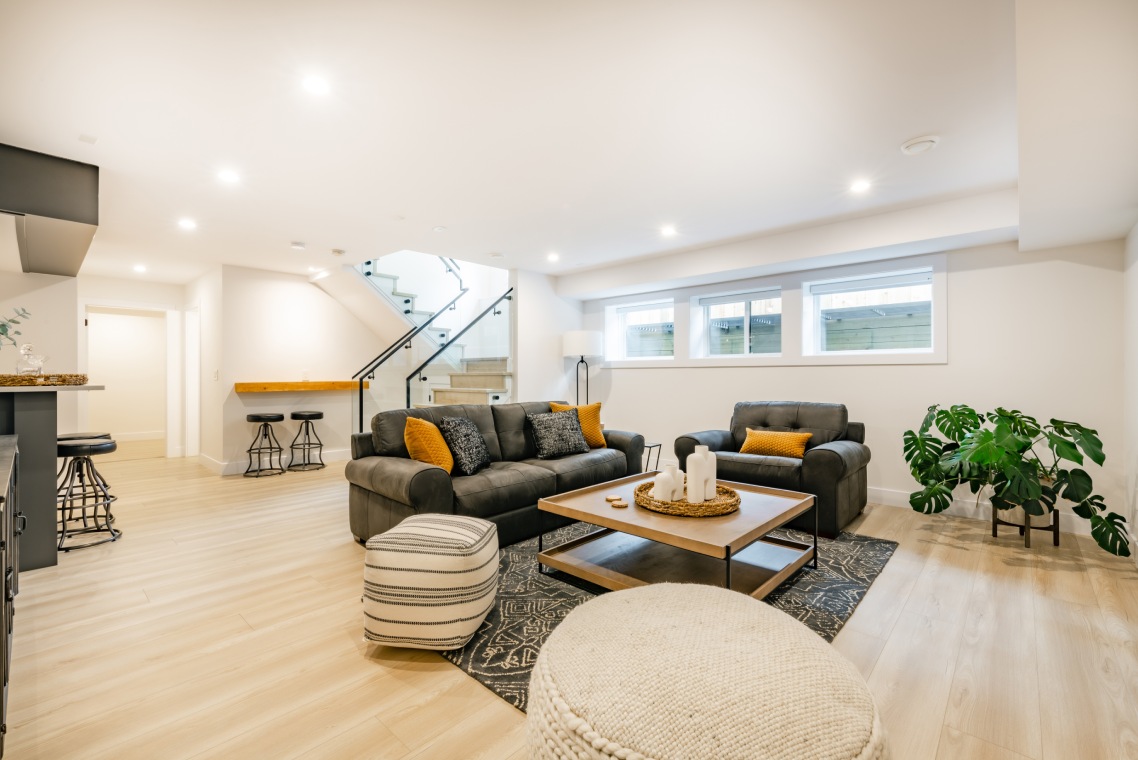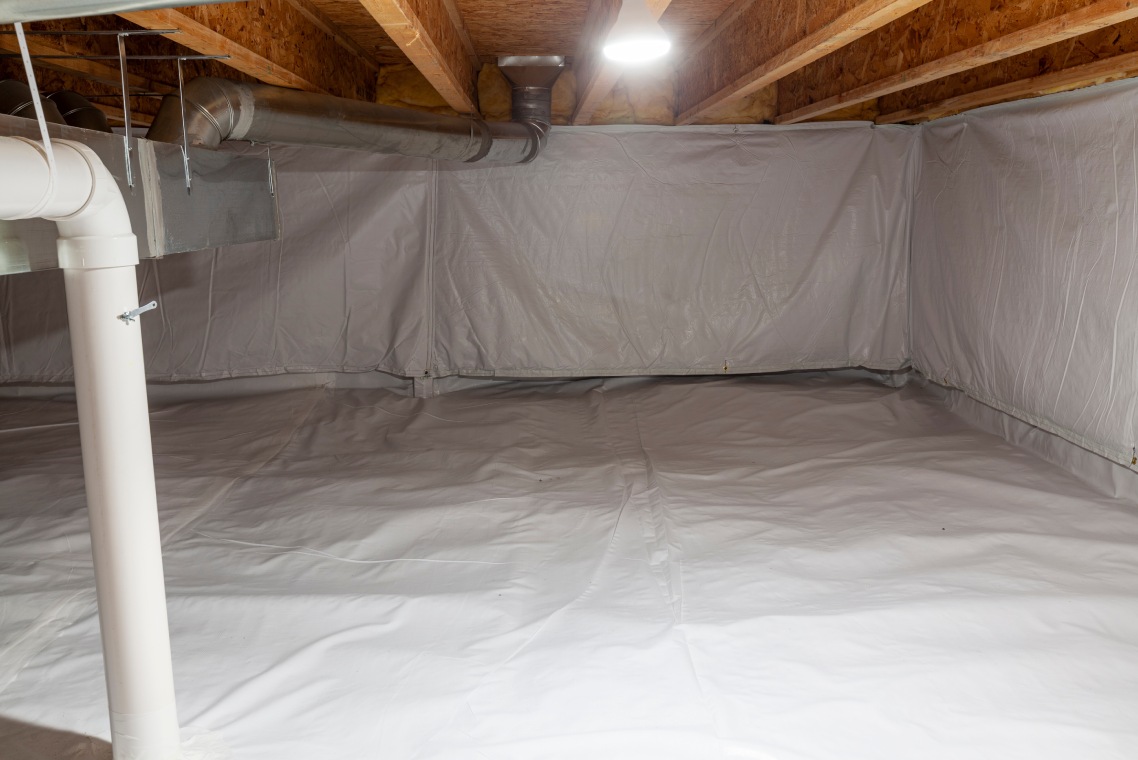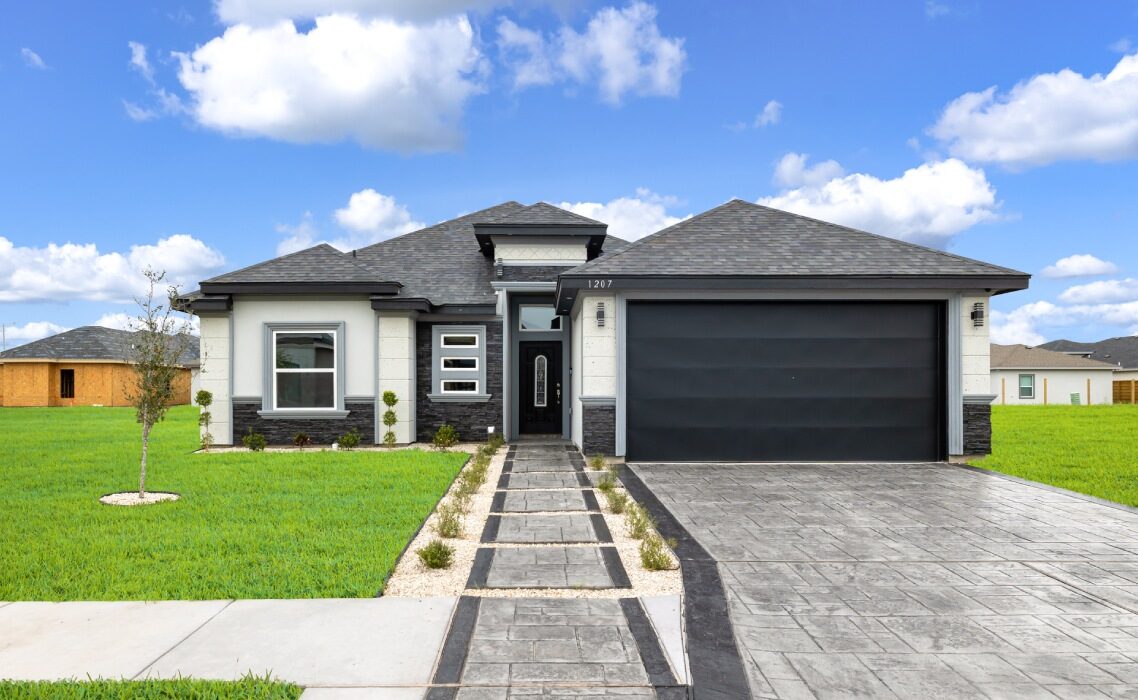Crawl Space Vs Basement for Your Custom Home
Are you building a custom home and debating whether to include a basement or a crawl space? We understand the dilemma.
When you’re building a custom home the decision between a basement and a crawl space can influence costs, space, and how you use your home. By understanding what sets a crawl space apart from a basement, you will be better equipped to choose what fits your needs and budget.
Here, we will weigh the benefits and drawbacks of a crawl space and a basement and help you figure out the right foundation for your new custom home.
Let’s get started.
Understanding Basements: Benefits and Drawbacks

Basements are the lowest room in a house, typically used for storage, utility space, and sometimes even as additional living areas. These spaces are particularly advantageous as they offer better insulation and can easily be converted into functional living areas such as bedrooms, bathrooms, or kitchens. Basements often come with separate entrances, providing convenient access and enhancing the versatility of the home.
Pros:
- Extra Space: Basements provide valuable additional space that can be used for storage, utility rooms, or even transformed into living areas like bedrooms, bathrooms, or a home gym.
- Better Insulation: Being partially below ground, basements can help regulate the temperature of your home, keeping it cooler in the summer and warmer in the winter.
- Versatility: With separate entrances, basements can offer flexible uses, such as a guest suite or an income-generating rental space.
- Increased Property Value: A well-finished basement can boost the resale value of your home, appealing to potential buyers looking for extra space.
Cons:
- Higher Costs: Building a basement generally costs more, with expenses often ranging from $5,000 to $10,000 above other foundation types. This higher cost can be attributed to the additional labor and materials required.
- Moisture and Mold Risks: Basements are prone to moisture issues and mold due to their underground location. You may need to invest in waterproofing solutions and sump pumps to prevent problems.
- Limited Natural Light: Basements often lack natural daylight. To improve this, you might need to add features like skylights or windows, which can further increase costs.
- Potential for Flooding: Depending on your location and water table, basements can be at risk of flooding, necessitating careful planning and additional drainage solutions.
Understanding Crawl Spaces: Benefits and Drawbacks

Crawl spaces are those narrow, unfinished areas found beneath the lowest level of a house, typically ranging from one to three feet in height. These spaces are primarily used for storage and house essential utility systems like plumbing, electrical lines, and HVAC. They offer easy access for maintenance and repairs without the need for a full basement.
Pros:
- Lower Construction Costs: Building a crawl space is generally more affordable compared to a basement, saving you money on initial construction.
- Better Moisture Control: Crawl spaces are less prone to flooding and often offer better moisture control, making them a suitable choice for McAllen’s humid months.
- Improved Ventilation: These spaces contribute to better overall home ventilation, helping to prevent mold and mildew issues.
- Easier Access for Repairs: With their accessible height, crawl spaces allow for straightforward maintenance of utility systems.
Cons:
- Limited Usable Space: The narrow height of crawl spaces means there’s minimal usable space, which can limit their functionality.
- Accessibility Issues: Their low height makes crawl spaces difficult to navigate, potentially complicating access for maintenance or repairs.
- Potential Drainage Problems: Crawl spaces often have poor drainage systems, which can lead to water accumulation and require additional maintenance.
- Pest Vulnerability: These spaces can attract pests, necessitating regular inspections and treatments to prevent infestations.
Crawl Space vs Basement: Cost Considerations

When deciding between a crawl space and a basement, understanding the cost implications is crucial. Basements are generally more expensive to construct, with costs ranging from $5,000 to $10,000 more than crawl spaces. This higher expense is due to the building essentials, such as concrete and insulation, as well as the complexity of construction, which often requires waterproofing measures to prevent moisture issues.
On the other hand, crawl spaces are significantly more affordable. They involve simpler construction methods and use less material, primarily dirt floors, and basic structural supports. Crawl spaces also pose fewer risks related to moisture and flooding, reducing the need for costly preventive measures. Therefore, if you are on a budget, crawl spaces offer a cost-effective alternative while still providing necessary utility storage.
Crawl Space vs Basement: Space and Accessibility
When comparing a crawl space and a basement, the amount of usable space is a crucial factor.
Basements typically offer substantial square footage that can be converted into additional living areas, such as bedrooms, home offices, or recreational rooms. The higher clearance and larger area make basements perfect for storage purposes or utility installations like HVAC systems, water heaters, and laundry units.
In terms of accessibility, basements generally provide easier access due to their full-height ceilings and standard staircases, facilitating frequent usage and modifications.
Crawl spaces, on the other hand, are more limited. With lower clearance heights ranging from one to three feet, they are less accessible and primarily used for housing plumbing, electrical systems, and limited storage. They are accessed through small entrances, making them less convenient for regular use.
The benefits of additional living or storage space in basements while building a custom home cannot be overstated. Apart from adding functional rooms, a finished basement can significantly increase the home’s value and usability.
On the contrary, while crawl spaces offer some advantages in terms of cost and moisture control, they fall short in providing the same level of flexible usage and accessibility as basements.
Crawl Space vs Basement: Utility and Maintenance
When it comes to maintenance, both basements and crawl spaces have their unique requirements. Basements, while offering more usable space, are prone to issues like humidity and mold. This often necessitates the installation of sump pumps and dehumidifiers to manage moisture levels and prevent potential water damage. Furthermore, regular inspections and waterproofing measures are essential to maintaining a basement’s structural integrity.
On the other hand, crawl spaces tend to be more affordable to maintain but aren’t without their own set of challenges. These areas can be prone to pest infestations, including termites and rodents, due to their unheated and often dirt-floored nature. Proper ventilation is also crucial to prevent moisture buildup and heat retention issues. New home buyers need to ensure that crawl spaces are adequately insulated and perhaps even encapsulated to mitigate these problems.
Make the Best Decision for Your Custom Home
Choosing between a crawl space and a basement depends significantly on your individual needs and priorities. If you require extra living space and can manage the associated costs and maintenance, a basement might be a better fit. Conversely, if budget constraints and minimal additional space needs are paramount, a crawl space could be the more suitable option.
Ultimately, you might also want to consider additional factors such as your geographic location, budget, intended use of space, and maintenance capabilities before making your decision.
Still unsure? We will help you choose the proper foundation to ensure long-term satisfaction and functionality. Contact Villanueva Construction today.

